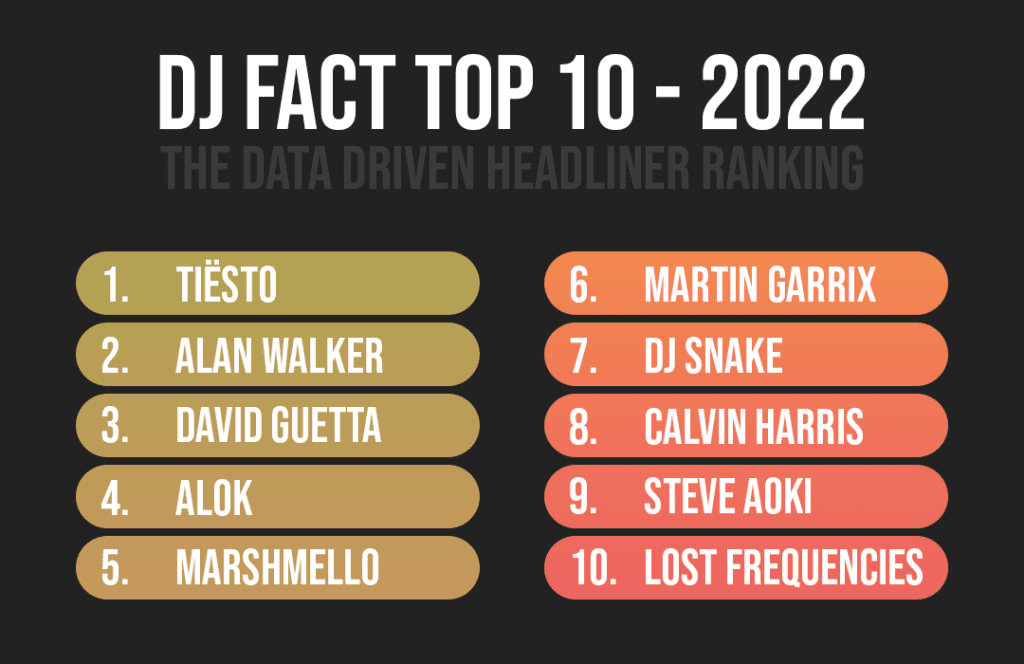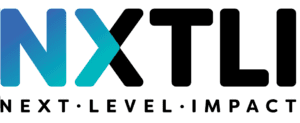Jutta Leerdam is by far the most popular Dutch Olympic athlete on Instagram. With 2.4 million followers, she is four times the number-2 ranked athlete: Suzanne Schulting (686,000 followers). Another striking fact: on Nov. 23, 2021, Jutta reached the milestone of 1 million followers. It took her only less than 12 weeks to more than double this number.
Part of the explanation of her success, is by sharing that same success. The post in which Jutta Leerdam thanks her fans for getting her 1 millionth follower has now been liked 3.3 million times. Due to the popularity of this post, the short video ended up in the "Discovery" of a lot of people, who then clicked on the famous heart. So sharing success, in turn, creates more success.
Did the number of likes increase proportionally with her follower growth? No. This was not the case. With the exception of a video capturing a training ride in slow-motion, which garnered nearly 1 million likes, Jutta Leerdam does not suddenly score more likes after her follower growth. On the contrary, her reach is growing, but the love she was used to getting from her fans will decrease slightly proportionally.
Kimberley Bos garners praise, Itzhak de Laat receives support
Notable was the commitment Kimberley Bos achieved after her participation in the Olympics. The tough skeleton star, who thundered down a bobsled run at 120 km/h headfirst and won bronze, stirred up a lot of interest among new followers. A great opportunity to take the sport to the next level with Kimberley and ride the wave of her popularity!
Itzhak de Laat saw the other side of the coin. He came a few millimeters short of making it to the finals with the short trackers. His post on social media received a lot of comments expressing support. This is another thing where social media shows its power, when a setback needs to be processed.
Suzanne Schulting is crowd favorite
The most number of likes goes to Suzanne Schulting. The winner of 4 medals got almost 800,000 likes and about as many comments on her posts in just two weeks. More than Jutta Leerdam.
Success or failure: relevance and rhythm is the key to success
And so it turns out; accomplishments and emotions always score. Followers want to see sincere people, and then reward this with a heart or a comment. Sharing success, sharing setbacks, asking or offering support or taking your followers into your daily life, are still the best scoring type of posts for any brand or person. Nevertheless, remember, not every post has to be a hit, but a constant rhythm in visibility is also worth something.
Digital content strategy with the NXTLI Dashboard
Jeroen Westermann is Digital Strategist at NXTLI. With the NXTLI Dashboard, developed by NXTLI, we provide insight into the results of a brand, club, person or organization on its digital channels. We connect this with value and with commercial results. Based on this we strategize and develop digital campaigns that accelerate and optimize growth. Interested? Get in touch with us!
The 2022 DJ FACT Top 100 has a new, Dutch No. 1. Tiësto succeeds Marshmello at the head of the alternative, fact-based dance-act ranking by Denis Doeland in collaboration with This Is Our House. The complete list can be found below.
A new year, so new round and new opportunities in the DJ FACT Top 100. But first, it's still time to take stock of 2021. Which DJs were the best on the digital spectrum last year?
Counterpoint to DJ Mag Top 100
As announced in late 2020 at the launch of our alternative rankings, in collaboration with This Is Our House, we would look beyond garnering audience votes through campaigns by artists themselves at the DJ Fact Top 100. In doing so, we aim to provide an objective counterpoint to DJ Mag's popularity poll, the DJ Mag Top 100.
Reputation Index
For example, it is important to also look at performance on the various streaming services and social media channels. How is the fan relationship maintained? How many fans and streams does the DJ have on Spotify, Deezer, Apple Music, Amazon Music and 6 other services such as Beatport? But also: how is he or she doing on Bandsintown and Wikipedia?
In compiling the 2022 DJ FACT Top 100, we used insights from various data platforms such as Chartmetric, Viberate and the Reputation Index. Finally, we also considered the position in the DJ Mag Top 100.
The measurement period is from January 1 to December 31, 2021. The decision to measure throughout the year and announce the ranking at the beginning of the year ensures that we can monitor performance throughout the coming year. We are especially curious about the effect of performances in the real and virtual world on our list.

Zooming in on No. 1: Tiësto
Looking at the various channels and streaming services, as well as Tiësto's reputation, we cannot help but conclude that he is the rightful No. 1 of the DJ FACT Top 100. In the Chartmetric ranking, the Dutchman rose 38 positions since the beginning of last year. Also at Viberate, Tiësto rose by more than 30 million points. His social media performance, music performance and network respect are indicated there as outstanding.
Looking at our own Reputation Index ranking, we see that Tiësto ranks second. In the DJ MAG Top 100, he did not kick it further than 15th place. We compared all the data points and then simply see that, when we assign the DJ Fact Score to it, the DJ/producer originally from Breda gained the most points.

New parameters
In 2020, we started measuring digital reputation for the DJ FACT Top 100. Back then, we did not include other parameters. Now we have integrated the items below.
- Greatest reach: more streams, more views, more impressions. The number of contact points with the audience is a good indicator. Every day there are a number of eyes and ears that you as a DJ can have contact with.
- Healthy fan engagement: just scoring streams isn't all that matters. You want to include some of the new listeners in a reliable fan base. Loyal fans are essential to long-term success.
- Success on multiple channels: different channels suit different audiences. Artists still too often jump from one platform to another. A strong presence on a wide range of channels in the digital ecosystem ensures that you reach as many people as possible.

Where does Charlotte de Witte stand?
Belgian techno artist Charlotte de Witte has once again risen in the Reputation Index, to fourth place. Nice to see that her efforts on social media are being rewarded. If we hold the other channels against that and look at the streaming services, however, we see that she does not get more than 176 points. That's over 100 points less than the No. 1.
By the way, our prediction is that Charlotte de Witte will do well again in the Reputation Index next year and will maintain her position in that section. If she is able to get her fan base moving to generate streams and views, she will also begin to rise in our DJ FACT Top 100.

Notable listings
Our research with various systems providing data revealed a remarkable number of DJs who do not have a DJ Mag Top 100 listing but are eligible for one. We also came across many DJs whose ranking is becoming grimly obvious. Not to mention the remarkable new "entries" that just fall out of the sky, it seems.
A number of articles will appear on TIOH.com in the near future that will answer the above findings. Starting with an interview with lead researcher and initiator of the DJ FACT Top 100, Denis Doeland (photo above).
DJ FACT Top 100
The complete 2022 DJ FACT Top 100 can be found here. The first DJ FACT Top 100 can be found here. You will find the 2022 list on TIOH.com soon. See also Denis Doeland's website.
According to Google' s Search Engine Optimization (SEO) manual, publishing engaging, relevant and useful content will affect your website more to be found better in the search engine than any other factor of SEO.
Users recognize quality content and are more likely to refer other people to it. For example, think about interesting blog posts, videos, posts on social media and email. The better the content matches the visitor's need, the better it helps build your website's reputation with both visitors and Google. As a result, you will be better found in the search engine
In short, the quality of your content is crucial for visitors to your website to build trust and (ultimately) achieve commercial success from there. It's high time to fully embrace this ROI-generating marketing tactic if you don't already.
Content marketing delivers better results
Companies that use content marketing have on average a 6 times higher conversion rate, and the costs are also on average 62% lower. You also appear higher in the list of search results, compared to your competitors. This obviously affects your commercial success.
Content marketing as a ranking factor
Google's success is based on one thing: showing users the right information they need to solve their queries. That information is logically contained in content. This content can be in the form of a blog, but also on forums, in videos, social media, newsletters, or other forms of digital communication. Creating relevant content for your business is therefore very important.
Make sure content is relevant to your target audience
If you know your target audience well, you know what needs, problems and challenges they have. And what questions they ask (to Google) to get answers. Make sure your content responds to this in the best way possible.
For example, make a list of the most important questions asked of you by (potential) customers and create content that answers these questions as completely and honestly as possible. Then you are most likely to be found by people who ask these questions to the search engine.
Content and Google's business model
The higher the quality of the content, the more satisfied users will be. Google's entire business model depends on the quality of content people post online. So creating good content should really be your number one marketing priority.
Want to learn more about the importance of content marketing?
Get the replay of the "Next Level Talk" webinar from Sept. 7, 2021. You'll hear from the "Godfather of Content Marketing" Joe Pulizzi on why a "content-first business" is the #1 digital business model of this decade. And how to develop a successful content-driven business within 12-24 months.
Swipe up is replaced by a new sticker
For years, the beloved "Swipe up" functionality has been a perfect opportunity for Instagrammers to redirect their followers to external URLs. For example, to an online store or an action page. This functionality was always only available to the larger Instagram accounts with at least 10,000 followers or the verified accounts with a blue checkmark. Instagram will remove this functionality, where users could share external urls with their followers, on Aug. 30. In its place will be a new link "sticker," in the form we already know as polls, captions, and questions, among others.
Successful tests for new URL sticker
Instagram started testing these new stickers last June (2021). Several Instagram users were already able to use and test the new sticker variant regardless of their number of followers or verification status. The rollout of this new sticker - intended for sharing external urls - will be available starting August 30 for the larger and verified accounts that were previously also eligible for the Swipe up feature.
Different stickers for different functionalities
Explaining the change, Head of Product of Instagram Vishal Shah explained that these new stickers would better fit the way stories are used by Instagram users. As we know, there are already several features within Instagram that can be added to stories as stickers: for donations, music, and with hashtags. And so now URLs are being added.
More control for higher conversion and better promotion
This new link sticker will also be able to be personalized in the same way as the other stickers. Instagram creators will have control over the color, positioning and text of the new sticker. As a result, you can now place the URL sticker anywhere in your story, which in turn maximizes engagement opportunities! This sticker will have another additional engagement functionality that the Swipe up did not have, namely users can also leave a comment or respond to the post. This was previously not possible with the Swipe up feature.
With the more flexible way Instagrammers can now start placing URL stickers on their stories, and no longer relying on the default position of the Swipe up feature, we expect a much more approachable possibility of promotion. This will make promotions appear more pleasant and less commercial to followers. And chances are that this very thing will contribute to higher conversions. But: time will tell.
In this interview, Jorik Helmink, General Manager of Scantraxx, the label for the harder styles tells how he developed the Business Acceleration Framework uses. "Thanks to using the framework, I'm able to steer by data, instead of gut feeling."
Steering by data
Scantraxx expressed its ambition to become a leader in the digital field. To realize that ambition, the label set to work with the Business Acceleration Framework. Helmink: "By applying a data-driven approach, we can realize even more growth for our artists. That's why we got all the knowledge and information flows above water and set up a new structure in the company. That new structure gives us the complete overview of both operations and cash flows, which we didn't have a clear understanding of before."
Insight is also provided to Scantraxx by monitoring all online channels. "Thanks to a clear understanding of this data, we can roll out our digital strategy and achieve objectives in a structured way. We move away from gut feeling and can say with certainty what profitable investments are. Based on the number of streams of an artist's previous tracks, forecasts can be drawn up. That way we know if-and to what extent-we can co-invest from the label in, say, a music video."
Understanding fan relationships
To gain an understanding of the label's performance, Scantraxx not only measures how its own fans are doing. "We also do weekly competitive analysis for all relevant online channels, such as YouTube, Instagram, Facebook and Twitter. This allows us to see what is working and how we can do certain things better ourselves. That's how we stay top of mind with our fans and the whole scene."
One of the ways Scantraxx stays top of mind is by increasing the post rate (or: the Digital Heartbeat) as needed. "We post at least as often, but preferably more often, than our competition. This way we build a strong relationship with our fans, by passing by on their timeline more often. In doing so, we take into account the different time zones around the world. A big advantage: this makes our marketing more efficient and allows us to reach a larger percentage of our online followers. We know better how to reach certain groups and no longer shoot with hail. I call it "the new advertising": spend less, get more results. This is also because we have started to give a bigger role to sending mailings. By increasing our role in the ecosystem of Scantraxx and the artists we work with, we are reaching even more fans."
Handiness in digital domain
Scantraxx aims to cross-pollinate between the various artists active on the label, creating a larger digital ecosystem. "We let our artists benefit from each other's reach. That mutual, online, support takes each other further and exudes unity. For example, they share each other's music or include each other's music in a playlist. Together we are strong and have the greatest reach."
Another handoff in the digital realm, the label is partnering with NXTLI. "They support us in terms of content strategy. Thanks to a weekly meeting with NXTLI, in which we discuss progress and formulate action points, there is continuous interaction. It's nice to work with a specialized party that knows how to get even more out of our content."
Digital mature organization
Before getting started, Scantraxx first started with a scan of the extent to which an organization is Digitally Mature. "That turned out to be disappointing; we scored inadequate for this scan. Fortunately, after a few months we gained more insight and it became clear how we could do more things digitally. We now score almost a seven in this area. In concrete terms, that means: first we were collecting data, now we can use data to estimate the future. That gives more peace and confidence in daily operations."
For example, DJs use music videos to promote an album or song. Thanks to data insights, it is possible to make a reasonable estimate of how many streams a particular song will generate. "Our forecasts are not a matter of gut feeling, but data-driven. We make a below-, mid- and above-streaming target for a certain period of time together with the artists during the preparation of a release. As a result, we both know what we have to work for to achieve it. Setting targets offers clear advantages. It allows us to make interim adjustments if a release needs more social media coverage to meet the targets. This makes our releases better marketed and investments better balanced. We are also creating more content for Spotify, because we see the growth in streams there."
Business activation and further ambitions
The label is betting heavily on revenue model activation. "As we manage the new internal processes and digital label strategy better and better, we are looking at how to use this strategy for new labels to be set up. This will create new revenue models. Our structure is increasingly coming into its own, which is why we are now able to implement on this digital label structure in new labels to be set up, if there is a demand for it. This prevents new labels from making decisions on gut feeling and also allows them to be data-driven. As a result, they make better decisions, spend less money on marketing and don't have to reinvent the wheel themselves. That setup is scalable."
Conclusion: increasing ambition
Scantraxx's ambition was to become a leader in the digital field. During the last edition of HDE (the event within ADE for the harder styles), the label gave a talk about the transformation it is going through. "We got positive reactions to that. The next step is to put our ambition even bigger and wider, on more stages and show even more appealing results."
Note: In this corona era, there is a need to share insights that industry peers may benefit from. I understand that some of this may come across as colored. As a consultant to Scantraxx and a founder of the Business Acceleration Framework, I have tried to shape this interview as objectively as possible.
It is crisis. A crisis caused by the coronavirus. The first shock wave has passed and the new normal is already showing itself. Step by step space must be made for new ways of thinking, acting and working. Sitting still is not an option. Now is the time to push through and implement change in your organization at an increased pace.
According to Abraham Maslow, people by nature have difficulty with change. This makes it all the more difficult for companies to continually move with the digital and social changes that are only rushing forward at a rapid pace. Still, innovation is and will remain important for future success. Especially at a time of corona crisis. Back in 2013, I wrote about the journey from analog to digital that doesn't happen overnight. The insights and findings from that time still hold true today. They are more relevant and urgent than I ever thought too when publishing our book back then.
The digital world has become a basic need
Online is the new normal according to Peter Hinssen, a thought leader on the impact of technology and society. The flow of information is bigger and faster than ever. However, business still too often sees the Internet as a bundle of channels through which to send messages, when fundamentally it is not a channel like TV, radio or newspapers. Customers and fans are frenetically approached as a kind of elusive individual cyber-citizens. But nothing could be further from the truth. Although we find innovation difficult, the very nature of the human brain is super social.
The Internet and social media that we use to shape our world is the result of our ability to collaborate and drive to share, for good reason. Despite our efforts to continually express and present ourselves in unique ways, we remain fundamentally herd animals. We view the world through the lens of our relationships with others and, moreover, may interact with each other without really thinking about it. It is not at all surprising that the digital world has become a basic need. We just need to learn to respond to it properly in business terms.
Over 95 percent of buying decisions are made subconsciously
Modern neurology and psychology make it clear that our perception is largely an illusion. Our memory is not a computer that retrieves files with photographic precision. According to Ap Dijksterhuis (2007) and Dick Swaab (2012), the percentage of purchase decisions we make subconsciously is even higher than 95 percent. The processing time of the unconscious brain turns out to be 200,000 times greater than the conscious one. In practice, this means that your customers are coloring much faster than they can verbally express. Our brain appears to be stimulated by six specific messages (Renvoise & Morin 2007). As an entrepreneur, manager or employee in marketing, sales and service, you would do well to respond intelligently to this when communicating with customers and fans:
- Self-interest: the we kind in an I-illusion generation
- Contrast: exceptions to the rule make a difference
- Tangibility: language is and remains tricky for the brain
- Holding attention from beginning to end is essential
- Emotions: memories must be constantly fed
- Image: pictures and videos say more than 1,000 words
Pim van der Feltz, Google Benelux director, wrote on Emerce some time ago, "The one-way traffic of brands is no longer of our time. They must become conversation partners, building a relationship based on trust and historical data and providing appropriate advice from there. In the sea of choices, they must be a beacon of calm for consumers. The challenge is to move from brand building to relevant surprise.'

Turning strangers into friends creates new business value
In the book Social Media is Bullshit, author B.J. Mendelson calls social media marketing a catch-all term. However, this does a disservice to many experts. But fundamentally, he is right. Social media are simply a part of the Internet. Social channels are a part of the entire ecosystem of businesses. The Internet has always been social since its inception. Just as humans are by nature. But companies are too quickly disappointed when the Internet and social media do not deliver desired ROI and ROE (return on engagement) in a short period of time. In fact, in most cases this has to do with the transition from broadcast to dialogue that they themselves have to make.
The change process to delivering added value in the daily lives of customers and fans by truly responding to their behaviors and basic needs takes time. Turning strangers into friends is essential for a company to stay in the technological age. At least you are on the right track if your customers and fans:
- Giving a place in the ecosystem (shelter)
- Giving attention they deserve (trust)
- Provides space to express an opinion (belonging)
- Gives appreciation for efforts (recognition)
- Provides opportunity to help (development)
Building and maintaining relationships is more central than ever
Customer psychology is not floaty, although this is often thought. In fact, it is an absolute necessity to survive as a company in the battle for the lasting favor of customers and fans.There is no business like social business. A concept that is vastly overhyped and is actually nothing more and less than offering products and services that fundamentally meet the needs and expectations of the target audience. By starting with communicating instead of marketing and activating people instead of advertising, supply and demand can be matched step by step.
The Internet and social media are not a holy grail for increasing sales and brand awareness. Building and maintaining relationships is more central than ever. Figures from two decades show that in 99 percent of cases, visitors are not actively on the Web to buy something. So the strategic challenge for companies is in unconsciously triggering customers and fans on the platforms and channels in the ecosystem where they are. The commitment of all employees within organizations is essential to successfully making the transition from analog to digital.
Bas Meijerink in an interview with Management Team: 'Social is often linked to media. As if it's a separate entity. Social is not the tool or technology, but is in everything you do. Whether it's Nike, Apple, McDonalds, Starbucks, Shell or Hema. If they flout soft values they will take notice. The message of social media is that consumers won't be fooled anymore.
Vision and core values determine future success
The future of companies is likable. As humans, we only connect with companies that inspire us, listen to us and that we can trust. After making a connection, we want to build a relationship from dialogue. It is clear that many companies still have a long way to go in embracing the necessary social approach in business operations. Stepping away from silo thinking is a huge change. All networks and systems must be connected.
Connections, from whatever platform or channel, must be centrally registered. According to Marije Moll of JungleMinds, social companies achieve growth in increasing customer satisfaction by giving employees influence within the company's processes and culture. From this approach, companies can flourish in terms of valuable relationships, innovation and the effective use of people. That's what it's all about.
Mission
NXTLI is a data-driven content marketing agency. We help organizations develop and implement a next level Content Impact Strategy.
We believe that the more relevant and personal the interaction is, the more positive impact it has on people's lives. That's what we do it for!
Get in touch
Send an email
Call +31 6 43046468
Visiting address
A'DAM Tower
Overhoeksplein 1
1031 KS Amsterdam
Postal address
NXTLI B.V.
Box D3700
Keurenplein 41
1069 CD Amsterdam
